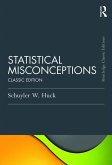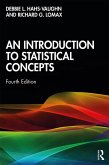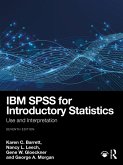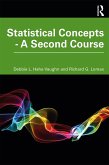The author's accessible discussion of each misconception has five parts:
- The Misconception - a brief description of the misunderstanding
- Evidence that the Misconception Exists - examples and claimed prevalence
- Why the Misconception is Dangerous - consequence of having the misunderstanding
- Undoing the Misconception - how to think correctly about the concept
- Internet Assignment - an interactive activity to help readers gain a firm grasp of the statistical concept and overcome the misconception.
The book's statistical misconceptions are grouped into 12 chapters that match the topics typically taught in introductory/intermediate courses. However, each of the 52 discussions is self-contained, thus allowing the misconceptions to be covered in any order without confusing the reader. Organized and presented in this manner, the book is an ideal supplement for any standard textbook.
Statistical Misconceptions is appropriate for courses taught in a variety of disciplines including psychology, medicine, education, nursing, business, and the social sciences. The book also will benefit independent researchers interested in undoing their statistical misconceptions.
Dieser Download kann aus rechtlichen Gründen nur mit Rechnungsadresse in A, B, BG, CY, CZ, D, DK, EW, E, FIN, F, GR, HR, H, IRL, I, LT, L, LR, M, NL, PL, P, R, S, SLO, SK ausgeliefert werden.









